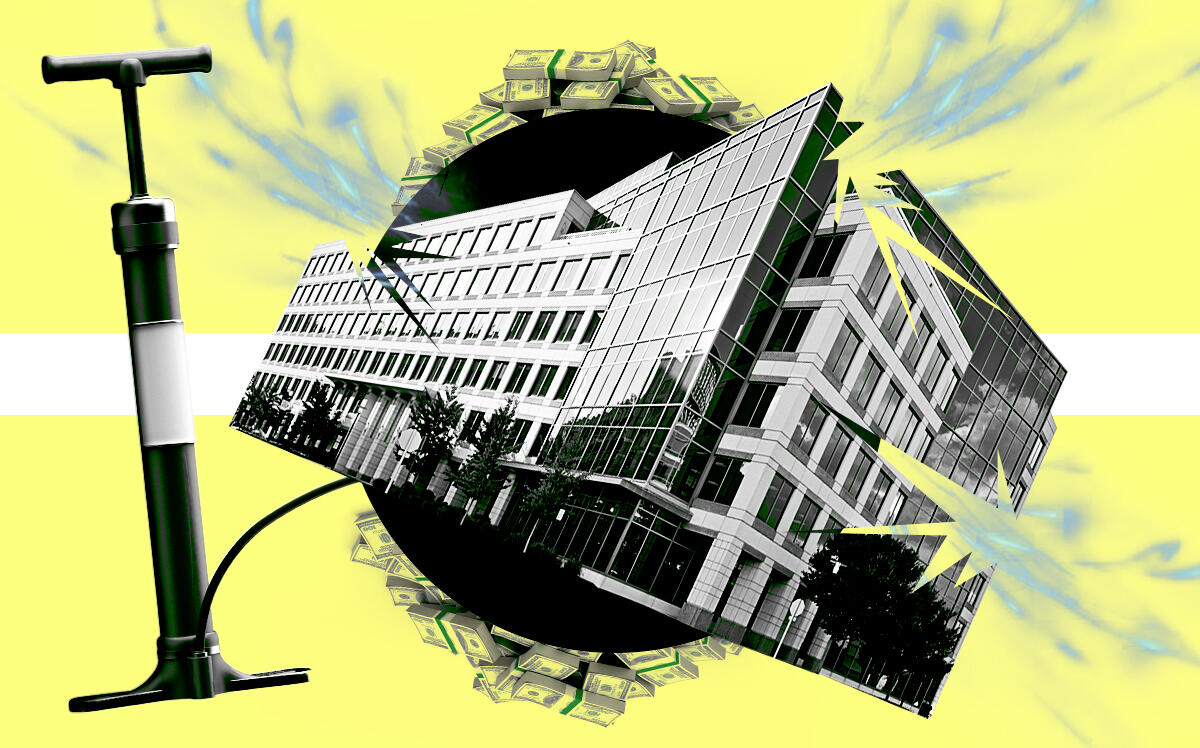Trending
Inflation’s at a 40-year high. Commercial real estate didn’t get the memo
“Inflation has some impact on the margin. But if real estate is not strong, real estate is not going up”

Flush with tourists, hotels in resort areas of South Florida are jacking up rates to above pre-pandemic levels. Business-dependent hotels in New York, meanwhile, are struggling to fill rooms.
Hotels are supposed to be the ultimate real estate hedge against inflation, as they allow owners to reset their rates every night.
But as inflation surges at its fastest rate in nearly 40 years, hotels and other sectors of commercial real estate are seeing such outsize performance — whether up or down — that it’s challenging conventional wisdom that property is always an effective protection from rising prices.
“In most markets, we’re not necessarily seeing inflation driving where rent increases are,” said Sabina Reeves, an economist at CBRE. “That’s going to be far more dominated by structural changes.”
Commercial imbalance
The pandemic has created clear winners and losers in real estate. Hedging against inflation is all about raising rents, but sectors like office and retail have borne the brunt of lockdowns and other Covid-related restrictions.
Some sectors are driving returns far beyond what could be explained by a 6 or 7 percent rise in the Consumer Price Index. Warehouses, apartments and self-storage facilities are enjoying surging demand.
“Inflation has some impact on the margin,” said Randy Giraldo, a portfolio manager at Nuveen Real Estate. “The CPI may be posting big numbers, but if real estate is not strong, real estate is not going up.”
Giraldo manages Nuveen’s TIAA Real Estate account, a $34 billion collection of core properties that’s widely regarded as a barometer of the U.S. real estate market.
Last year, the fund returned just shy of 18 percent after expenses. The fourth quarter saw the fund’s highest returns in more than 40 years.
Traditionally, the fund’s different sectors have largely performed in step with one other. But there’s now a glaring disparity.
Industrial led the pack, with whopping returns of 45 percent. Multifamily and self-storage — classes with short-term leases that can capture inflationary gains — saw returns of between 25 and 30 percent.
Office and retail, however, lagged far behind, with returns ranging from 0 to 6 percent.
But only about 4 percent of the fund’s gains can be attributed to an increase in income, according to Giraldo. The rest, he said, were driven by property values being pushed up by the private market.
“There was a bit of inflation in the number. Rents were definitely hiking in housing and logistics year-over-year,” he said. “But it was not the biggest driver.”
Experts said it will take time for markets to stabilize before the effects of inflation become clear.
“If we weren’t in the middle of a recovery from such a massive shock to much of real estate, it would be easier to tease out of this growth clearly what percentage is coming from inflation,” said Morningstar analyst Kevin Brown.
Pricing panic
It’s become one of those pandemic-era rituals: During the second week of the month, the Bureau of Labor Statistics releases its numbers for the Consumer Price Index and a fresh panic about inflation sets in.
“Inflation is topic number one,” said Evan Serton, portfolio specialist at Cohen & Steers, an investment manager that specializes in liquid real assets such as real estate stocks and commodities.
Investors certainly poured money into real estate last year. Commercial property sales soared to a record $809 billion in 2021, according to Real Capital Analytics. That was almost double 2020’s total and well above the previous record of roughly $600 billion set in 2019.
On Wall Street, real estate ETFs and open-ended funds saw net flows swing from a loss of $3 billion in 2020 to a gain of nearly $18 billion last year, according to Morningstar.
But there are several factors besides hedging against inflation that could explain the surge in demand. After real estate stocks were hammered early in the pandemic and prices dropped into discount territory last year, they became attractive again as other investments struggled.
“Multi-asset managers are concerned about bond portfolios and equity managers are concerned about higher-multiple growth stocks,” said Anthony Paolone, a REIT analyst at JPMorgan. “So both sides of that prompt folks to move into other areas, real estate being one of them.”
Despite the many headlines, inflation is less of a concern to investors than one might think. One way to measure sentiment around rising prices is to look at the difference between the yields on Treasury bonds and their counterparts in inflation-protected Treasury securities (TIPS), also known as the break-even spread.
“Based on the current shape of the break-even curve, the market expects inflation to remain elevated in the near-term before falling back to historical norms of about 2 percent,” said Mike Sewell, a portfolio manager at T. Rowe Price.
Inflation and its fallout could have some longer-term impacts on real estate. REIT investors are particularly sensitive when it comes to interest rates, and real estate stocks already took a hit this year when the Federal Reserve announced plans to raise rates.
If inflation drives up development and construction costs, it could stem the supply of new projects, squeezing out competition and benefiting owners of existing properties.
And it is clear that investors are paying attention to an economic phenomenon that few have ever experienced in their lifetimes.
Gene Podkaminer, head of research for Franklin Templeton, said constructing a portfolio to protect against high inflation often means sacrificing nominal returns. But he said investors are starting to show more interest in real estate and other hedges.
“Just because the U.S. hasn’t experienced meaningfully high inflation over the last few decades doesn’t mean it’s going away,” he said.




